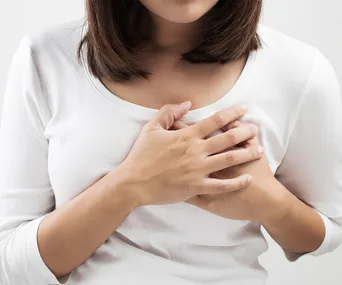A new and rather frightening risk factor has just been determined as the greatest for breast cancer in women – even more so than family history, obesity and later-in-life childbirth.
From a landmark study, women with high breast density and more glandular tissue have been identified to possess almost twice the risk of developing contralateral breast cancer, the University of California finds.
The large-scale study, published in the journal JAMA Oncology, evaluated the breast cancer risk of more than 200,000 40-74-year-old women enrolled in the Breast Cancer Surveillance Consortium – a research initiative designed to assess the delivery and quality of breast cancer screening.
Of these, 18,000 were found to have varying stages of breast cancer, while around 184,000 were not.
Breast density was recorded for each of the women, who were then categorised into four groups:
A, breasts composed almost entirely of fat;
B, participants with scattered dense tissue but mostly fat;
C, those with moderately dense tissue, and
D, women with dense tissue that makes up around 75 per cent of the breast.
The results
While a family history of the disease was previously thought to be one of the biggest risk factors, the results actually showed density to be the greatest threat in both pre-menopausal and menopausal women.
“Family history is a strong risk factor but not as prevalent as dense tissue to family history,” co-author Dr. Karla Kerlikowskesays. “Breast density is both a prevalent and strong risk factor which is why it contributes to the development of highest proportion of breast cancers in pre- and post-menopausal women.”
Both cancers and tissue appear white on mammograms, which makes a radiologist’s job all the more difficult when it comes to spotting malignancy between dense tissue and fat, which appears dark.

Like tissue, cancers appear white.
The solution
Unfortunately, there’s not a whole lot we can do. While one drug, an estrogen hormone blocker called tamoxifen, is the only intervention currently known to substantially reduces breast density – it is not considered a solution due to serious side effects.
Gaining weight may be a way to add fatty tissue to breasts and thus lower density, although obesity is a risk factor linked with several cancers, and therefore not considered an effective resolution either.
What we can do, however, is be twice as diligent and visit healthcare practitioners for regular breast examinations, scans and ultrasounds.
In Australia alone, one in eight women will be diagnosed with breast cancer in their lifetime, with eight women losing their battle to the illness each day. It is the most common form of cancer among women.
What are the signs and symptoms of breast cancer?
Besides a breast lump, which 83 per cent of diagnosed women bring to their doctors, women should also seek professional advice for:
Nipple abnormalities including redness, crusting or clear/bloody discharge
Breast pain or discomfort
Breast skin abnormalities
Breast ulcerations
Swelling or lump in the armpit
Back or muscular pain
Breathlessness
Changes to the contour or shape of the breast
Early detection is vital and can save lives. If you’re experiencing any of the above symptoms, wish to find out more, or want to book in for a check-up, visit your local GP today.



